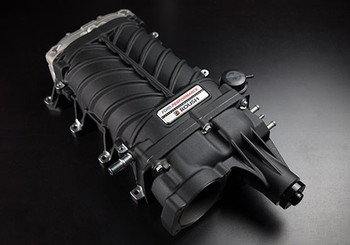2015 marked the Mustang's 50th anniversary, bringing with it the biggest design changes in years. Technically, it's on the same platform as its predecessor, but every dimension has been altered. The result is a car that is smaller than the outgoing model yet has a longer, wider wheelbase and more interior space. Independent rear suspension is finally available across the board, while a new double ball joint suspension and subframe at the front of the car mean major handling improvements and allow space for bigger brakes.
Of course, the main focus of any Mustang is the engine. The V6 is still technically available, but the true base engine is now the 2.3 liter EcoBoost. Producing 310 hp and 320 lb-ft. of torque from the factory, peak output is a little higher than the V6, but its major advantage comes from the engine's characteristic flat torque curve, giving it a feel more akin to a big V8 than a turbo four-cylinder. Unique features for the Mustang version include a twin-scroll turbocharger and a steel crankshaft. EcoBoost-equipped Mustangs weigh about 150 lbs. less than the GT, making them a good platform for building a track car.
The GT is powered by a Coyote V8 producing 435 hp and 400 lb-ft. of torque. That extra power shaves close to a second off the car's quarter mile time, yet it still delivers an EPA-estimated 25 mpg on the highway. It's not surprising the 5.0 has become so popular for engine swaps. Unlike the Ecoboost, this motor uses port fuel injection. This choice was made because Ford designers have said the advantages of a direct injection setup on this engine aren't enough to compensate for the added weight.
Like any turbocharged engine, the quickest way to get more power from the EcoBoost is more boost pressure. Adding an ECM tuner is a quick way to increase boost, but it can also reduce turbo lag, improve fuel economy and help the car run better on regular gasoline. Want to add a lot of boost? The stock plastic blow-off valve can crack under high pressures, which is why we offer metal replacements. Want to go beyond the stock setup? We have kits for adding bigger turbos and intercoolers.
The Coyote is still a relatively new engine, so it will take a while for tuners and aftermarket manufacturers to figure out how to get more out of the internals. Like any engine, this V8 can benefit from installing a better-flowing exhaust and intake. These engines also respond well to forced induction; we already have several kits available to add superchargers and turbochargers.




